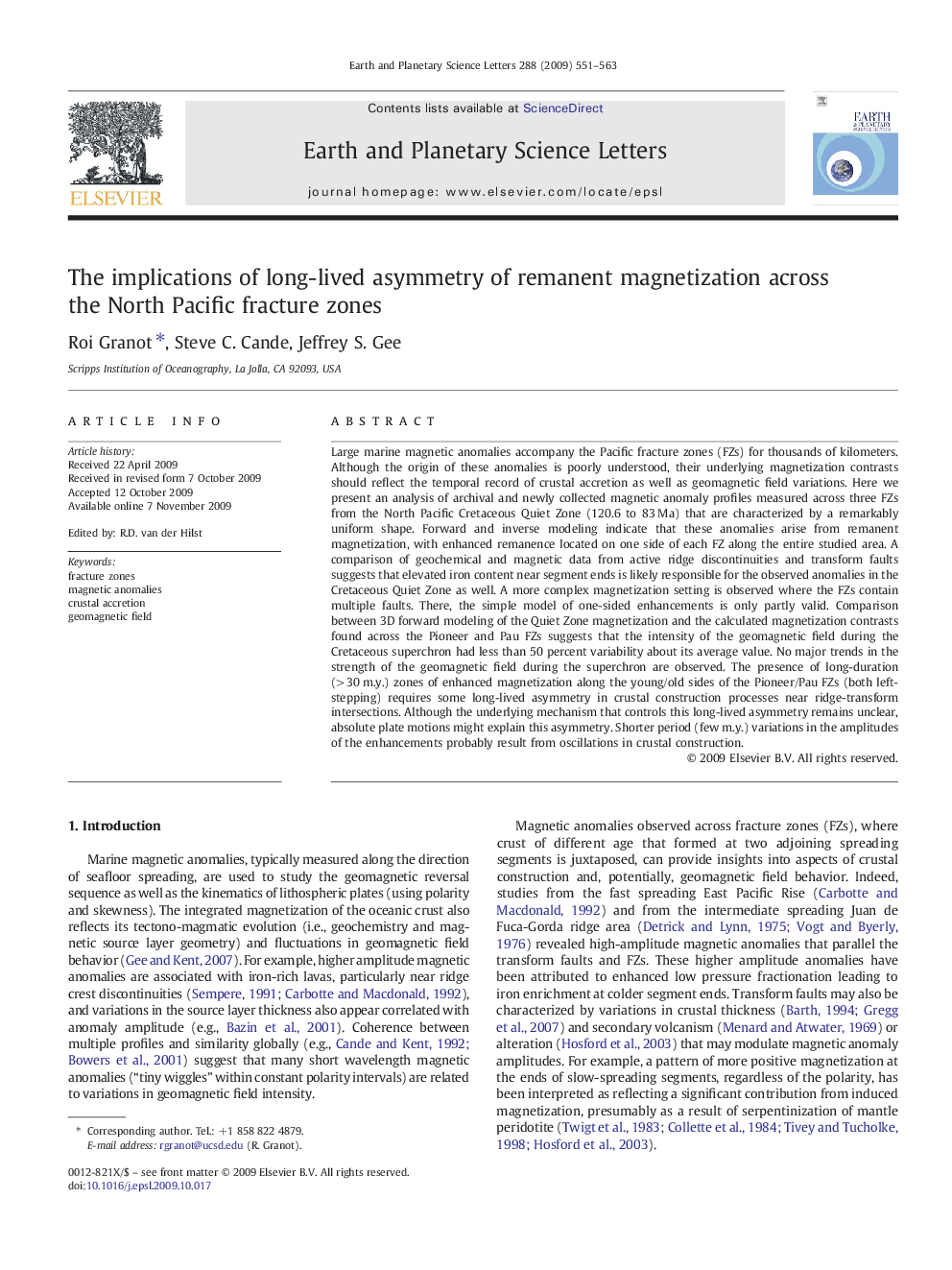| Article ID | Journal | Published Year | Pages | File Type |
|---|---|---|---|---|
| 4678755 | Earth and Planetary Science Letters | 2009 | 13 Pages |
Abstract
Large marine magnetic anomalies accompany the Pacific fracture zones (FZs) for thousands of kilometers. Although the origin of these anomalies is poorly understood, their underlying magnetization contrasts should reflect the temporal record of crustal accretion as well as geomagnetic field variations. Here we present an analysis of archival and newly collected magnetic anomaly profiles measured across three FZs from the North Pacific Cretaceous Quiet Zone (120.6 to 83Â Ma) that are characterized by a remarkably uniform shape. Forward and inverse modeling indicate that these anomalies arise from remanent magnetization, with enhanced remanence located on one side of each FZ along the entire studied area. A comparison of geochemical and magnetic data from active ridge discontinuities and transform faults suggests that elevated iron content near segment ends is likely responsible for the observed anomalies in the Cretaceous Quiet Zone as well. A more complex magnetization setting is observed where the FZs contain multiple faults. There, the simple model of one-sided enhancements is only partly valid. Comparison between 3D forward modeling of the Quiet Zone magnetization and the calculated magnetization contrasts found across the Pioneer and Pau FZs suggests that the intensity of the geomagnetic field during the Cretaceous superchron had less than 50 percent variability about its average value. No major trends in the strength of the geomagnetic field during the superchron are observed. The presence of long-duration (>Â 30Â m.y.) zones of enhanced magnetization along the young/old sides of the Pioneer/Pau FZs (both left-stepping) requires some long-lived asymmetry in crustal construction processes near ridge-transform intersections. Although the underlying mechanism that controls this long-lived asymmetry remains unclear, absolute plate motions might explain this asymmetry. Shorter period (few m.y.) variations in the amplitudes of the enhancements probably result from oscillations in crustal construction.
Related Topics
Physical Sciences and Engineering
Earth and Planetary Sciences
Earth and Planetary Sciences (General)
Authors
Roi Granot, Steve C. Cande, Jeffrey S. Gee,
